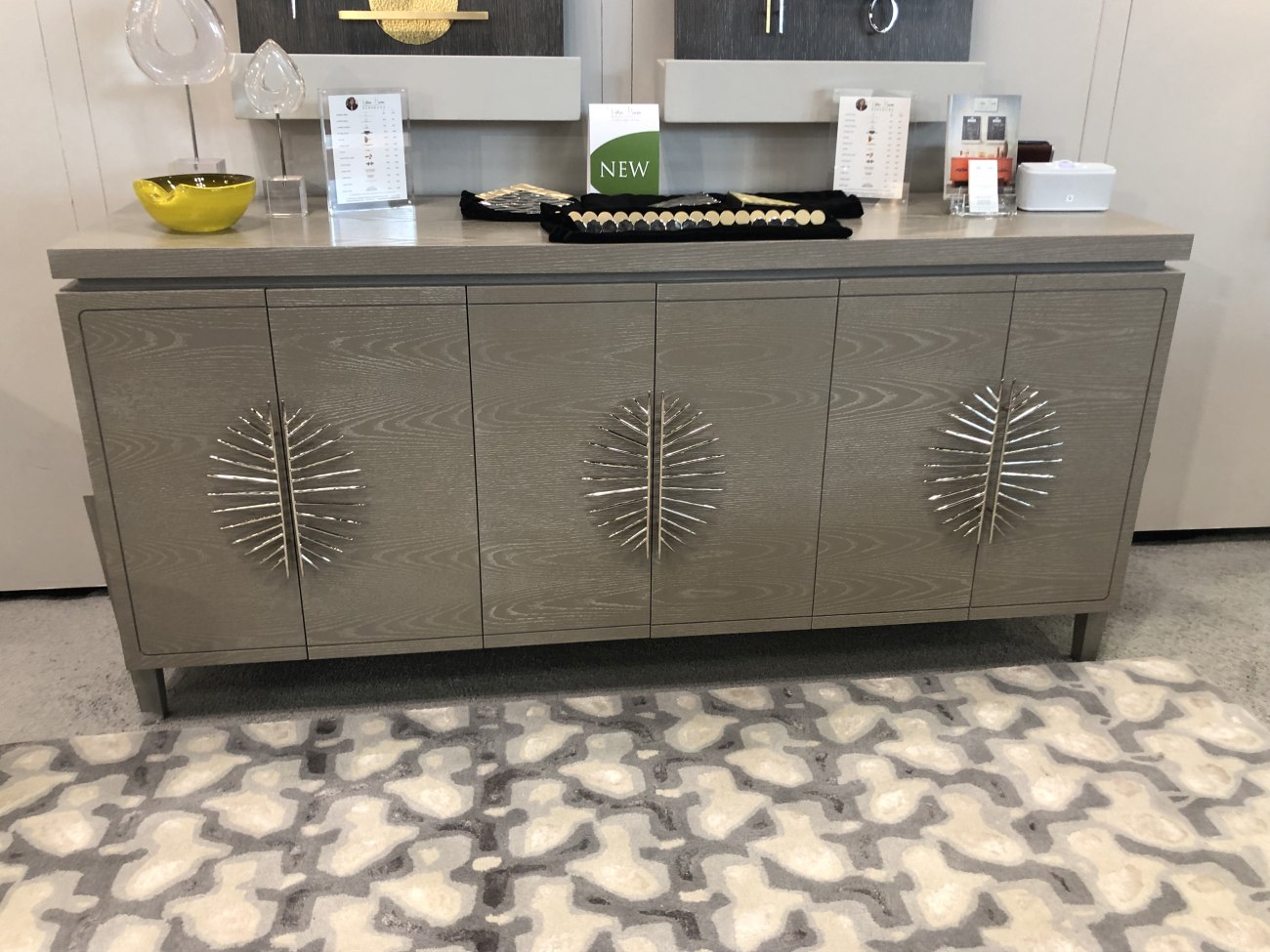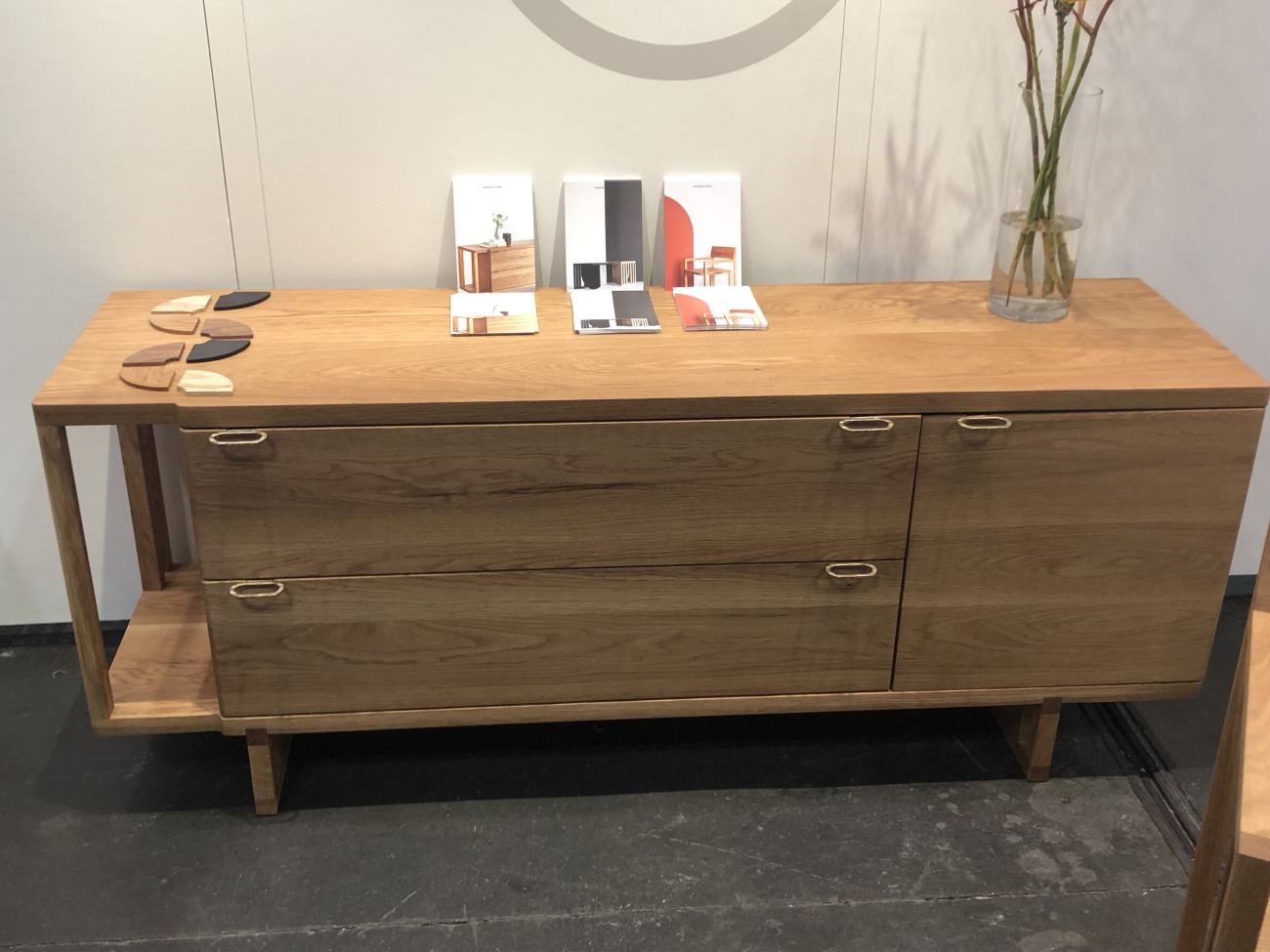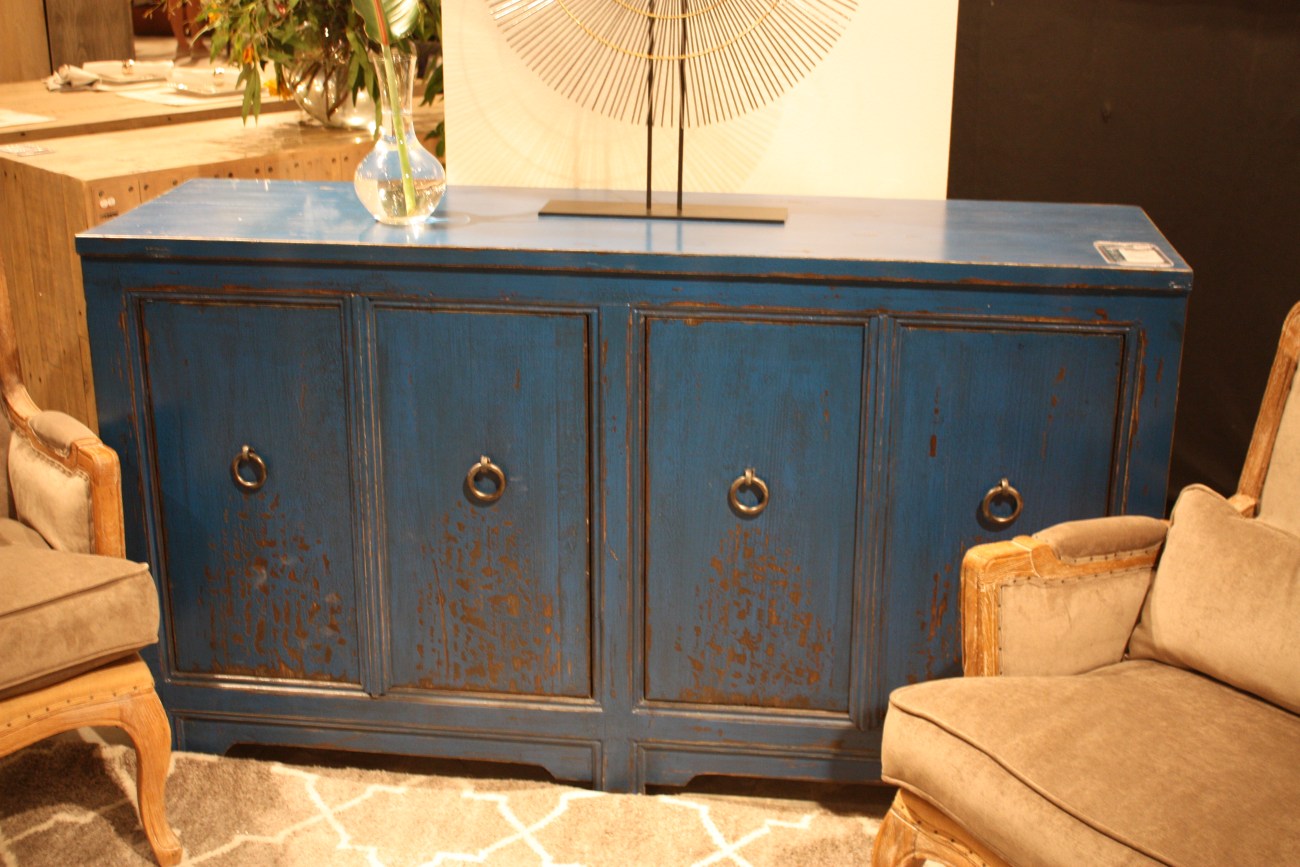A sideboard is a multipurpose, practical piece of storage furniture that has both decorative and functional uses in the home. A sideboard is frequently used in the dining room to serve as a surface for food service or decorative displays. A sideboard can be used anywhere in the house to help organize and improve the purpose and style of any space, even though it is usually found in dining areas.

A sideboard is a piece of furniture with a flat top that is usually supported by short legs or a base and sits at waist height or slightly below. Most sideboards have a combination of drawers and doors that can hold household items such as dishes, silverware, and servingware. Sideboards are more than just functional; they can also have unique and interesting designs that complement the style of any home interior.
Sideboards are comparable to buffets and credenzas but have some distinguishing characteristics that set them apart. The shapes of credenzas, buffets, and sideboards are similar; however, sideboards typically have short or no legs and are lower to the ground than buffets, which may have longer legs and a higher profile.
Credenzas are more like modern sideboards. Credenzas have a lower profile and a sleeker, more streamlined appearance than sideboards. Sideboards were traditionally associated with dining rooms, whereas credenzas were always associated with more formal settings, such as living rooms and offices.

A sideboard is a multi-functional piece of furniture that can be used in almost any room of your home.
Storage: Sideboards have a wide range of drawers, shelves, and doors in various configurations. They are useful for storing glassware, serving ware, linens, games, electronics, and other household items. Some sideboards include both open and closed storage sections.Display: The flat top of a sideboard is excellent for displaying items such as serving ware, artwork, sculpture, photographs, and vases.Server During Meals: Sideboards in dining rooms are the perfect height for arranging and presenting food. This can free up the middle of the table for table decorations and allow for the seating of additional guests.Entertainment Center: In living rooms, sideboards can serve as entertainment areas. They can provide a foundation for televisions and sound systems and a storage area for media equipment, DVDs, gaming consoles, and other entertainment accessories.Home Bar: Sideboards are great pieces to store bottles, bar utensils, and glasses to create your own personal home bar area in living rooms and dining rooms. Some even have protective tops made of mirror, granite, or marble slabs that shield the sideboard’s top from inadvertent spills.Entryway Organization: In entryways, foyers, and hallways, sideboards serve as a place to organize household accessories like dog leashes, hats, bags, keys, mail, gloves, and scarves. This keeps these vital items concealed but easily accessible.Room Divider: Sideboards can serve as room dividers in open-concept living areas, drawing boundaries between various functional zones with open spaces without completely enclosing them.Workspace: With a fold-out work surface or an integrated desk, some contemporary sideboards are made to double as workspaces. This facilitates the concealment and arrangement of work areas in open-concept living areas.Bedroom Storage: Sideboards in bedrooms can be used to set up a television, create an attractive display, or store extra items such as linens or clothes.

Selecting the right sideboard for your room can be a daunting decision, but it need not be difficult. Take into consideration the following suggestions to help you focus and select the perfect item.
Measure Your Space
Determine the available space where you want to place a sideboard. Measure the length, width, and height of the space to determine what size sideboard will work. Allow at least 24 inches of clearance around any potential sideboard for easy walkways.
Determine the Function of the Sideboard
Identify the primary purpose of the sideboard to decide the best size and style options for the piece. If you want a sideboard for serving food, choose one with a height of around 36 inches or one similar to your countertops. This makes it easier to place and serve food. It is also helpful if serving sideboards feature protective tops to preserve them from food, moisture, and heat damage.
For storage sideboards, look for sideboard options with ample storage and optimal drawer, shelf, and cabinet configurations. Display sideboards need to have side, flat tops.
Style and Aesthetics
Match or complement the existing style of the room’s furniture with a similar style sideboard. Whether your space is contemporary, rustic, farmhouse, mid-century, or traditional, there is a sideboard style to suit your taste. When selecting a sideboard to go with your decor, take the style, color, and materials into consideration.
Assess Your Storage Needs
First, determine the items that you want to store to decide which sideboard will work best for your needs if you want a piece for its storage potential. Choose appropriate storage configurations for large and small items that you want to store. Some sideboards have open storage compartments in the middle, which work well for attractive items like heirloom pieces that you want to display. Other sideboards have all closed storage, which works best for unsightly but necessary items.
Materials and Finish
Consider the materials used in the construction of a particular sideboard, as well as how it will wear and complement your lifestyle. Wood, MDF, metal, and glass are common materials, and each wears and damages differently. Sideboards with glass or marble features are prone to cracking and may not be appropriate in certain locations or for busy, active families. Certain high-gloss stained pieces will show more marks and scuffs and will be more difficult to repair than painted or rustic finished pieces.
Size and Scale
Check that the size and scale of the sideboard are proportional to the dimensions of the room and their other furniture. A typical sideboard width is 60 inches, but there are larger and smaller options if this size is not suitable.
A sideboard’s average height is 34-36 inches, making it ideal for serving food. When selecting a sideboard to mount a television on, keep in mind that many standard sideboards are too tall for comfortable TV viewing. For optimal viewing, experts recommend that the middle of the TV be mounted 41 inches above the floor.
Sideboards vary in depth but are typically 20-22 inches deep. Ensure that wherever you place your sideboard, there is 24 inches of clearance between this piece and other furniture. Ensure a clearance of 36 inches for particularly busy walkways.
Multi-Functional Features
Some sideboards feature additional features that are helpful to expand your ability to utilize them. They may include features such as pull-out serving trays, built-in wine racks, and integrated desk compartments.
Quality and Durability
Invest in a well-made piece that will last and maintain its character. Consider the material used in the construction as well as the quality of the hardware, craftsmanship, and design.
Budget
Decide on your budget before you go shopping for a sideboard. This will help you narrow down your options and select a piece that fits within your budget. You can save money by purchasing your sideboard during a sale or by looking for off-brand options. Synthetic wood sideboards are often less expensive than solid wood sideboards, but they are not as durable and will not last as long.
Personal Preferences
Trust your personal preferences when it comes to choosing a sideboard that resonates with your style. Selecting a style based on your liking will probably make you happier in the long run than selecting a style based on what you believe is appropriate.

Gisele Bundchen's contemporary twist on this emerging design trend is the talking point of her kitchen
Zendaya taps into the subtle power of this accessory to ensure her neutral living room is never boring
Amazon has become a go-to for chic home decor – here’s what we’re shopping from the 2024 Spring Sale
This designer's 'every seat needs a surface' rule has changed my living room layout forever – here's what I mean
5 designer Amazon storefronts that make shopping for stylish homeware so much easier
Joanna Gaines' 'mesmerizing' garden is the perfect example of how to grow cut spring flowers at home
Tan France opts for this stabilizing color palette to 'ground' his guest cottage, experts say
Shark's St Patrick's Day sale is here - and you can save $100s on vacuums and air purifiers
Matthew and Camila McConaughey's raw cabinets possess a texture and warmth that's replicable in our kitchens
13 Cool Pieces of Furniture with Hidden Compartments
Rattan Vs. Wicker: What’s the Difference?
Familiar Stores With Gorgeous Marble Top Dresser Styles
Cherry Wood: Everything You Need To Know
10 Baby Furniture Stores to Help You Build the Nursery Room
This Website will Save You Thousands on New Furniture
25 High-End Furniture Stores for Discerning Shoppers
What is a Sideboard? Meaning, Purpose, and Selection
High-End Furniture Brands For 2023 Worth Spending Money
15 Best Online Furniture Thrift Stores – What Your Home Needs To Look Distinctive